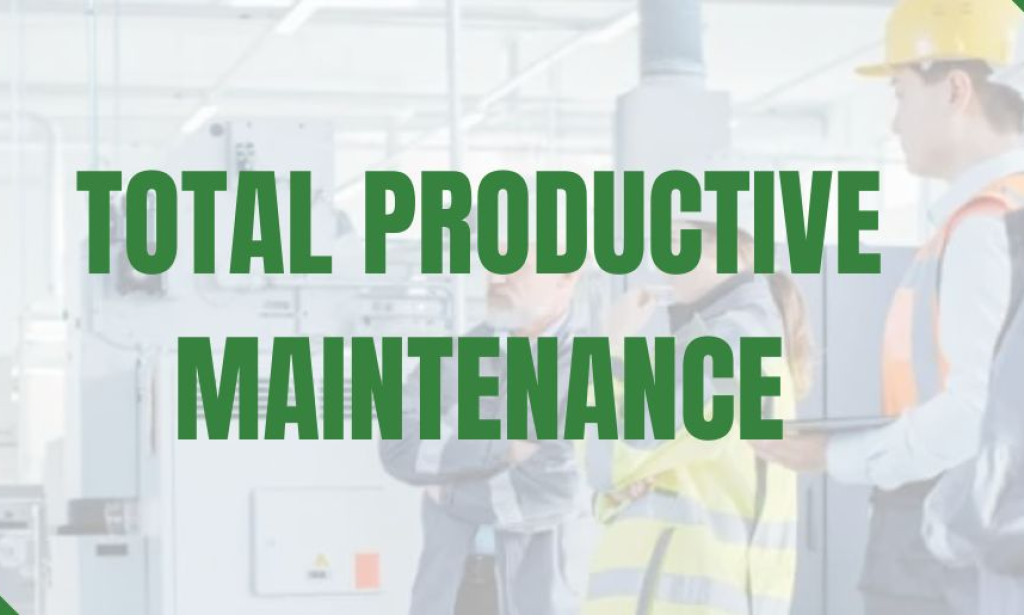In today’s fast-paced world, equipment reliability is essential for businesses to maintain productivity and competitiveness. One way to enhance equipment reliability is through Total Productive Maintenance (TPM). TPM focuses not only on maintenance but also on the overall effectiveness of equipment throughout its lifecycle. This blog will explore how TPM works and how businesses can achieve zero equipment breakdowns.
Understanding Total Productive Maintenance (TPM)
TPM is a systematic approach designed to improve the operational efficiency of equipment. Unlike traditional maintenance methods that wait for equipment to fail, TPM involves proactive and preventative strategies that enhance the performance of machinery. The concept originated in Japan in the 1960s and has since become widely adopted across various industries.
The Key Principles of TPM
- Focus on Equipment Effectiveness: TPM emphasizes the overall effectiveness of equipment, which encompasses availability, performance efficiency, and quality rates.
- Employee Involvement: Engaging employees at all levels is critical. They play a significant role in identifying problems, implementing solutions, and maintaining equipment.
- Continuous Improvement: TPM promotes a culture of continuous improvement. Businesses strive to make ongoing improvements through techniques such as Kaizen.
- Cross-Functional Teams: By forming teams that bring together individuals from various departments, businesses can ensure a holistic approach to maintenance.
- Standardization: Creating standardized processes ensures that maintenance practices are consistent and repeatable.
Steps to Achieve Zero Equipment Breakdown
Step 1: Design and Plan
Before implementing TPM, it’s imperative to design a robust plan. This plan should outline the goals, scope, and resources needed. Here are some essential components:
- Define Objectives: Determine what zero breakdown means for your business. Set measurable targets, such as reducing unplanned downtime by a specific percentage.
- Resource Allocation: Ensure you have the right tools and personnel in place. Assess what equipment needs attention and which team members will be responsible.
Step 2: Training and Skill Development

Employees must be well-trained to effectively carry out their roles in the TPM process. Training should include:
- Understanding TPM Principles: Employees should grasp the fundamentals of TPM and how it affects their daily tasks.
- Equipment Operation: Provide hands-on training for specific equipment. This helps employees become familiar with each machine’s quirks and potential issues.
- Problem-Solving Techniques: Teach employees techniques for identifying issues before they escalate. This could include learning to recognize early signs of equipment failure.
Step 3: Implement Preventative Maintenance
Preventative maintenance is at the core of TPM. It aims to reduce equipment breakdown through regular, planned maintenance activities. Consider these strategies:
- Scheduled Inspections: Conduct regular inspections based on manufacturers’ recommendations or industry standards. This helps catch potential issues before they develop into significant problems.
- Lubrication and Adjustments: Regularly lubricate machinery and make necessary adjustments to ensure optimal performance.
- Replacement of Worn Parts: Keep an eye on components that show wear and replace them before they lead to breakdowns.
Step 4: Foster a Culture of Ownership
Create an environment where employees feel responsible for the maintenance of their equipment. Ways to encourage ownership include:
- Assigning Responsibilities: Each employee should be assigned responsibility for specific machines or components. This creates a sense of ownership and accountability.
- Encouraging Reporting: Employees should report minor issues without the fear of reprimand. A culture of openness fosters communication, allowing teams to address problems before they worsen.
Step 5: Implement the Five Pillars of TPM
Total Productive Maintenance consists of five pillars that support the foundation of effective maintenance. These include:
- Autonomous Maintenance: Training operators to perform routine maintenance tasks allows them to take ownership of their equipment. This includes cleaning, lubricating, and performing minor repairs.
- Planned Maintenance: Schedule maintenance activities based on an accurate inventory of the equipment lifecycle. Accurate planning helps in reducing downtime for maintenance.
- Quality Maintenance: Ensure that your equipment produces quality products. Taking care of machinery reduces fines associated with defective products and enhances reputation.
- Focused Improvement: Identify specific areas that need improvement and take dedicated action to resolve those issues. Focusing on high-impact areas leads to significant gains.
- Training and Education: Continuously provide training for employees to enhance their skills, fostering a proactive approach to address equipment issues.
Step 6: Monitor Performance and Analyze Data
Monitoring equipment performance is crucial to achieving zero breakdowns. Use key performance indicators (KPIs) to evaluate effectiveness:
- OEE (Overall Equipment Effectiveness): Measure availability, performance, and quality to assess how well equipment performs.
- Downtime Analysis: Analyze downtime data to identify patterns and areas that require immediate attention.
- Maintenance Logs: Keep comprehensive maintenance logs to track all activities performed on the equipment. This helps identify trends and recurring issues.
Step 7: Encourage Continuous Improvement
A successful TPM implementation includes a focus on continuous improvement. Utilize Lean principles, such as Kaizen, to promote this culture:
- Regular Reviews: Conduct regular reviews of performance data and improvement initiatives. Adjust strategies as necessary based on findings.
- Employee Suggestions: Encourage employees to provide suggestions for improvement. They often have valuable insights on how to enhance operations.
- Celebrate Successes: Recognize and celebrate milestones achieved. Reinforcing positive behaviors enhances morale and encourages further improvement.
Conclusion
Total Productive Maintenance is a powerful strategy that can help organizations ensure zero equipment breakdowns. By following the steps outlined above, businesses can foster a maintenance culture that prioritizes reliability and efficiency. Implementing TPM requires commitment from all levels of an organization; however, the payoff in improved equipment performance and reduced downtime is well worth the effort.
As industries evolve and competition intensifies, embracing strategies like TPM will help businesses stay ahead. Invest in your equipment today to secure a successful and productive future.
By implementing Total Productive Maintenance effectively, organizations can ensure their equipment is not only operational but also productive. This shift in mindset from reactive to proactive maintenance can result in a significant reduction in equipment breakdowns, leading to increased efficiency and profitability.
Click here to get more information for TPM: https://www.ribcon.com/resource-center/total-productive-maintenance/



You must be logged in to post a comment.